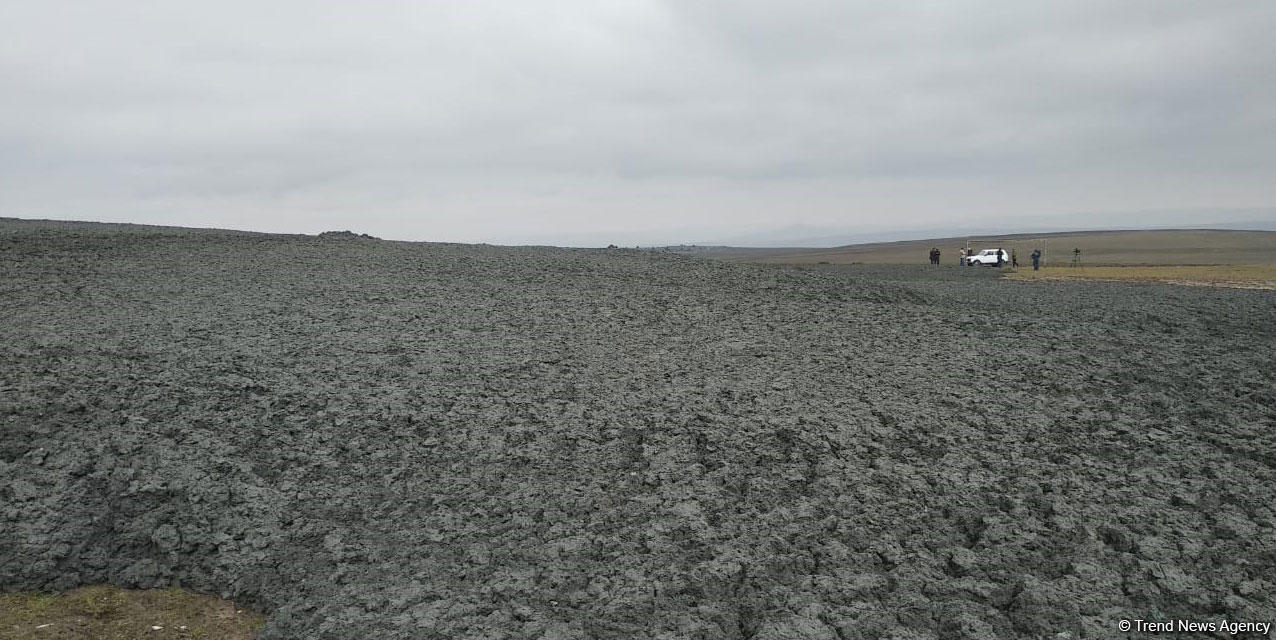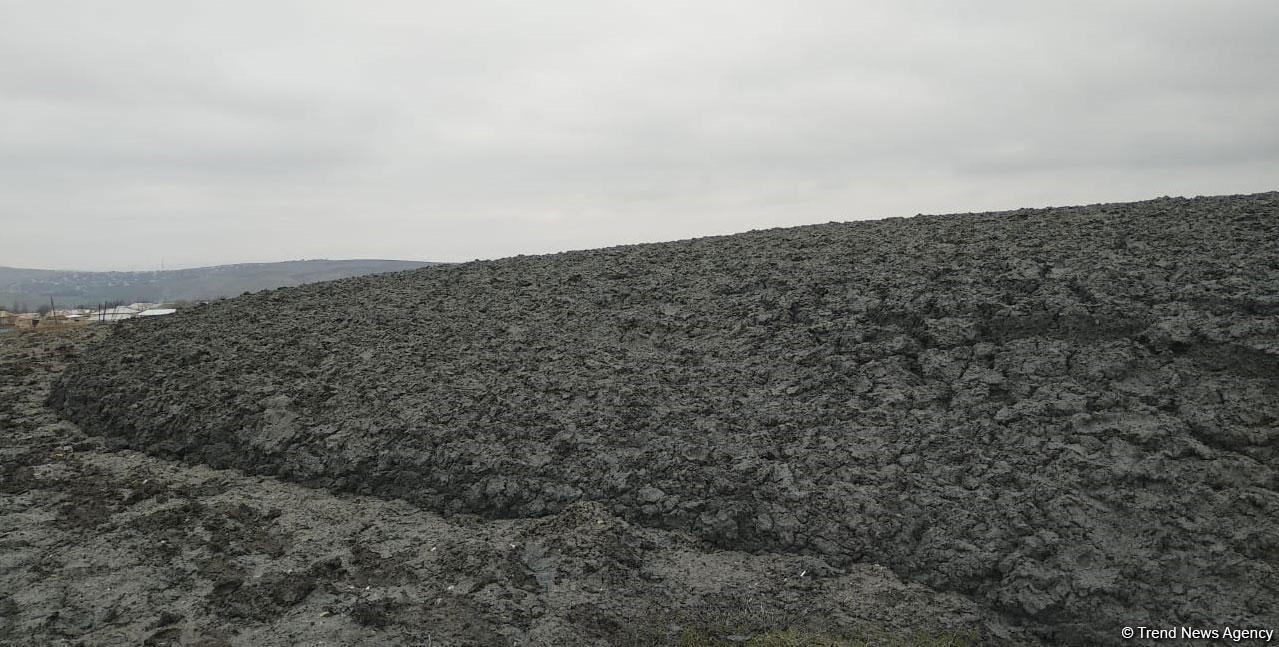Mud volcano erupted in Shamakhi [PHOTO]
![Mud volcano erupted in Shamakhi [PHOTO]](https://www.azernews.az/media/2019/02/13/gushchu1.jpg)
By Laman Ismayilova
Gushchu mud volcano erupted in Shamakhi region.
The eruption occurred 150 meters from the village.
The process was registered today at 06:00 am. The mud lava reached about 4-5 meters.
The eruption caused numerous deformations and cracks in two houses.
The mud lava spread over an area of two hectares.
Head of department, doctor of geological-mineralogical sciences, professor Adil Aliyev told Trend that the mud volcano erupted occurred after the earthquakes in Shamahi and Agsu on February 5. No one was injured during the eruption.
He stressed that there were no emissions of flame. Therefore no cracks characteristic for the eruption of such volcanoes were formed.
In conclusion, the professor added that Gushchu is a small but active volcano.
"The eruption first occurred in 1913, the last was in the past. Including the last eruption, Gushchu volcano has erupted 15 times over the past 200 years. The strongest eruptions were in 1917, 1941 1992," he said.
Previously, the scientist told Trend that powerful earthquakes affect the activation of volcanoes, and suggested that, along with Gushchu volcano, Demirchi, Gizmaidan volcanoes can be activated in Shamakhi, while Shikhzerli may erupt in Gobustan.
Azerbaijan or as it is called Land of Fire has the highest number of mud volcanoes in the world. Some 350 out of over 1,000 mud volcanoes in the world are located here.
The world’s largest mud volcanoes - Boyuk Khanizadagh and Turaghai - are both in Azerbaijan. Boyuk Khanizadagh, the diameter and height of which are 10 kilometers and 700 meters respectively, erupted on October 10, 2001, shooting out flames for 300 meters in the air. It was the highest record for flames shot from a mud volcano.
Underground and submarine mud volcanoes are also located in Azerbaijan.
There are more than 140 submarine volcanoes in the Caspian Sea. Eight islands in the Baku Archipelago are mud volcanoes by origination.
About 23 mud volcanoes in Azerbaijan received the status of the National Park and are protected by the state. In addition, they were included in the list of Seven Wonders of the World.
There are several interesting facts about mud volcanoes in Azerbaijan.
NASA geologists studying Mars planet, concluded that mud volcanoes of Azerbaijan are similar to uplands of the planet for their structure.
On September 5, 2004 the greatest mud volcano in the territory of Azerbaijan was added into the Guinness World Records.
The mud volcanoes located in Gobustan National Park sights attract thousands of tourists annually.
The State Historical-Artistic Reserve has been functioning since 1967. In 2007, the reserve was included in the UNESCO World Heritage Sites list.
A trip to Gobustan gives you a great chance to see these amazing active volcanoes from very close distance.
Azerbaijan's rich fields of oil and gas condensate such as Lokbatan, Garadagh, Oil Rocks, and Mishovdag were also discovered near mud volcanoes.
The lava, mud, and liquid spewed by mud volcanoes are used as raw materials for chemical and construction industries, as well as pharmacology.
Enriched with specific components - mineral salts, organic substances, microelements, volcanic mud has medicinal properties that have a beneficial effect on the human body.
Volcanic mud gives a great effect in the treatment of patients suffering from diseases of the peripheral and central nervous system, gastrointestinal tract, skin, etc.
---
Laman Ismayilova is AzerNews’ staff journalist, follow her on Twitter: @Lam_Ismayilova
Follow us on Twitter @AzerNewsAz
Here we are to serve you with news right now. It does not cost much, but worth your attention.
Choose to support open, independent, quality journalism and subscribe on a monthly basis.
By subscribing to our online newspaper, you can have full digital access to all news, analysis, and much more.
You can also follow AzerNEWS on Twitter @AzerNewsAz or Facebook @AzerNewsNewspaper
Thank you!












